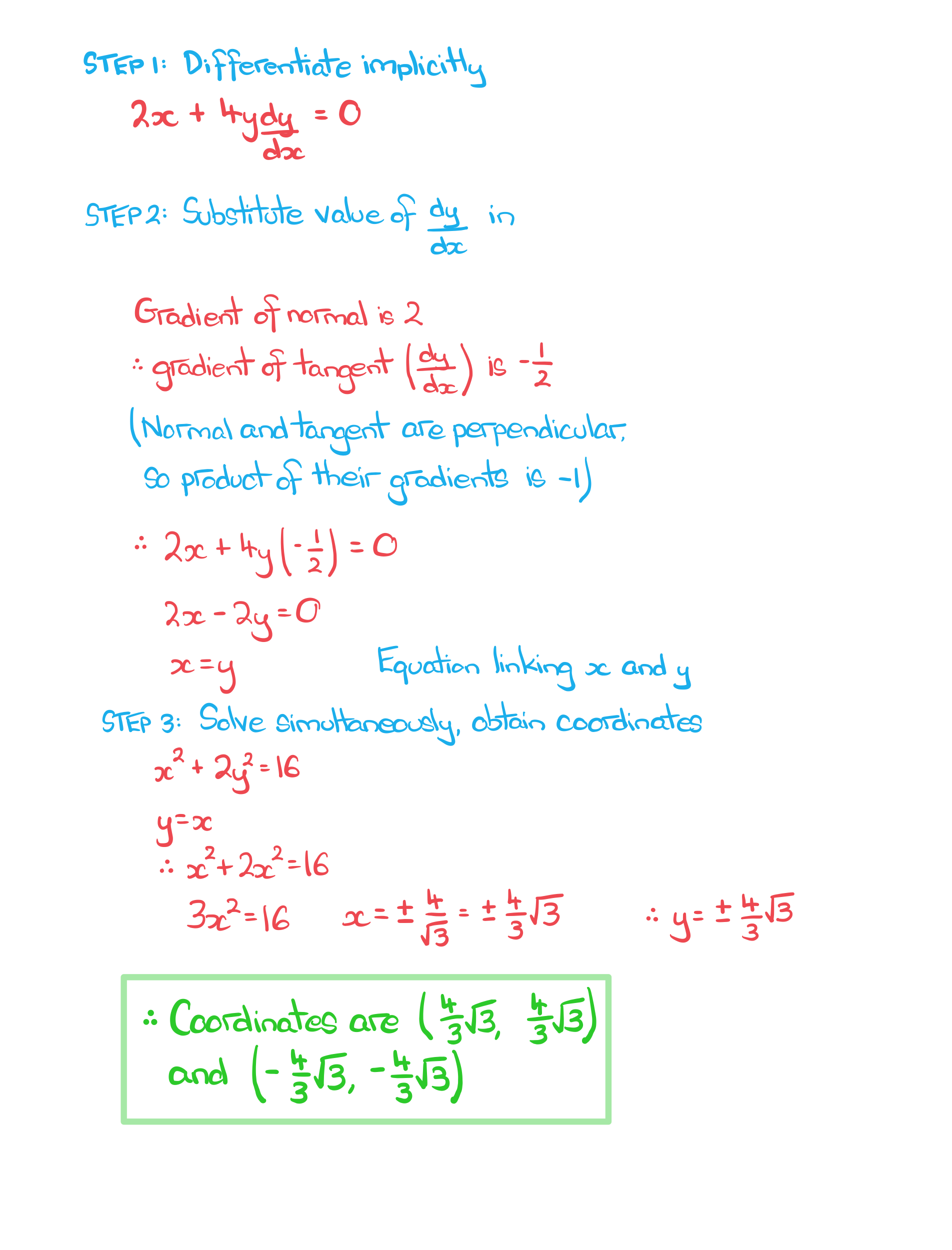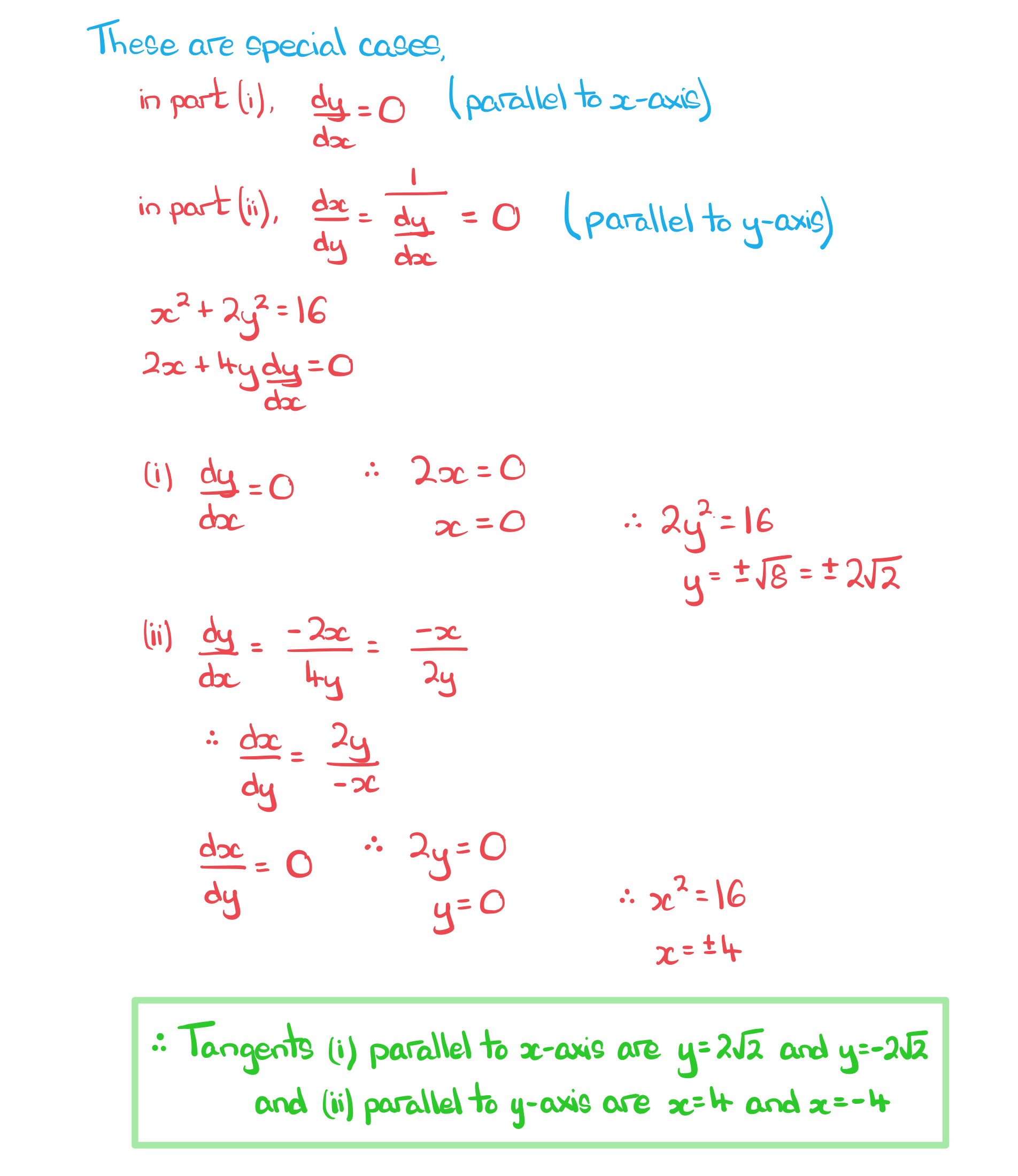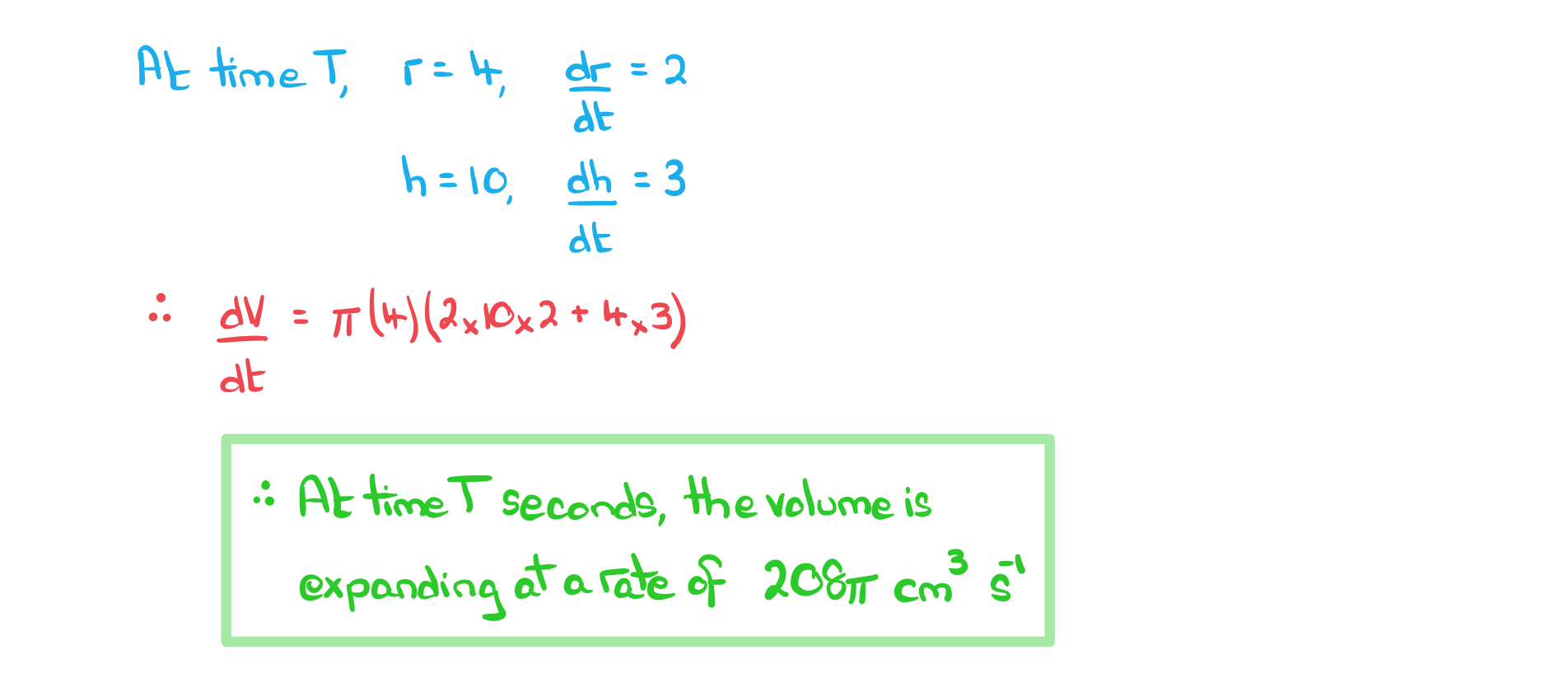Implicit Differentiation
What is implicit differentiation?
- An equation connecting x and y is not always easy to write explicitly in the form
or
- In such cases the equation is written implicitly
- as a function of
and
- in the form
- as a function of
- In such cases the equation is written implicitly
- Such equations can be differentiated implicitly using the chain rule
- A shortcut way of thinking about this is that ‘
is a function of a
’
- when differentiating a function of
chain rule says “differentiate with respect to
, then multiply by the derivative of
” (which is
)
- when differentiating a function of
Applications of Implicit Differentiation
What type of problems could involve implicit differentiation?
- Broadly speaking there are three types of problem that could involve implicit differentiation
- algebraic problems involving graphs, derivatives, tangents, normals, etc
- where it is not practical to write
explicitly in terms of
- usually in such cases,
will be in terms of
and
- where it is not practical to write
- optimisation problems that involve time derivatives
- more than one variable may be involved too
- algebraic problems involving graphs, derivatives, tangents, normals, etc
e.g. Volume of a cylinder,
e.g. The side length and (so) area of a square increase over time
-
- any problem that involves differentiating with respect to an extraneous variable
- e.g.
but the derivative
is required (rather than
)
- e.g.
- any problem that involves differentiating with respect to an extraneous variable
How do I apply implicit differentiation to algebraic problems?
- Algebraic problems revolve around values of the derivative (gradient)
- if not required to find this value it will either be given or implied
- Particular problems focus on special case tangent values
- horizontal tangents
- also referred to as tangents parallel to the
-axis
- this is when
- also referred to as tangents parallel to the
- vertical tangents
- also referred to as tangents parallel to the
-axis
- this is when
- In such cases it may appear that
but this has no solutions; this occurs when for nearby values of
,
- also referred to as tangents parallel to the
- horizontal tangents
(i.e. very steep gradients, near vertical)
- Other problems may involve finding equations of (other) tangents and/or normals
- For problems that involve finding the coordinates of points on a curve with a specified gradient the method below can be used
STEP 1
Differentiate the equation of the curve implicitly
STEP 2
Substitute the given or implied value of to create an equation linking
and
STEP 3
There are now two equations
-
- the original equation
- the linking equation
Solve them simultaneously to find the and
coordinates as required
Exam Tip
- After some rearranging,
will be in terms of both
and
- There is usually no need (unless asked to by the question) to write
in terms of
(or
) only
- There is usually no need (unless asked to by the question) to write
- If evalutaing derivatives, you'll need both
and
coordinates, so one may have to be found from the other using the original function
Worked Example
The curve C has equation .


How do I apply implicit differentiation to optimisation problems?
- For a single variable use chain rule to differentiate implicitly
- e.g. A square with side length changing over time,
- e.g. A square with side length changing over time,
- For more than one variable use product rule (and chain rule) to differentiate implicitly
- e.g. A square-based pyramid with base length and height changing over time,
- e.g. A square-based pyramid with base length and height changing over time,
- After differentiating implicitly the rest of the question should be similar to any other optimisation problem
- be aware of phrasing
- “the rate of change of the height of the pyramid” (over time) is
- “the rate of change of the height of the pyramid” (over time) is
- when finding the location of minimum and maximum problems
- there is not necessarily a turning point
- the minimum or maximum could be at the start or end of a given or appropriate interval
- be aware of phrasing
Exam Tip
- If you are struggling to tell which derivative is needed for a question, writing all possibilities down may help you
- You don't need to work them out at this stage but if you conisder them it may nudge you to the next stage of the solution
- e.g. For
, possible derivatives are
and
Worked Example
The radius, cm, and height,
cm, of a cylinder are increasing with time. The volume,
cm3, of the cylinder at time
seconds is given by
.
a) Find an expression for .

At time seconds, the radius of the cylinder is 4 cm, expanding at a rate of 2 cm s-1. At the same time, the height of the cylinder is 10 cm, expanding at a rate of 3 cm s-1.
Find the rate at which the volume is expanding at time seconds.

